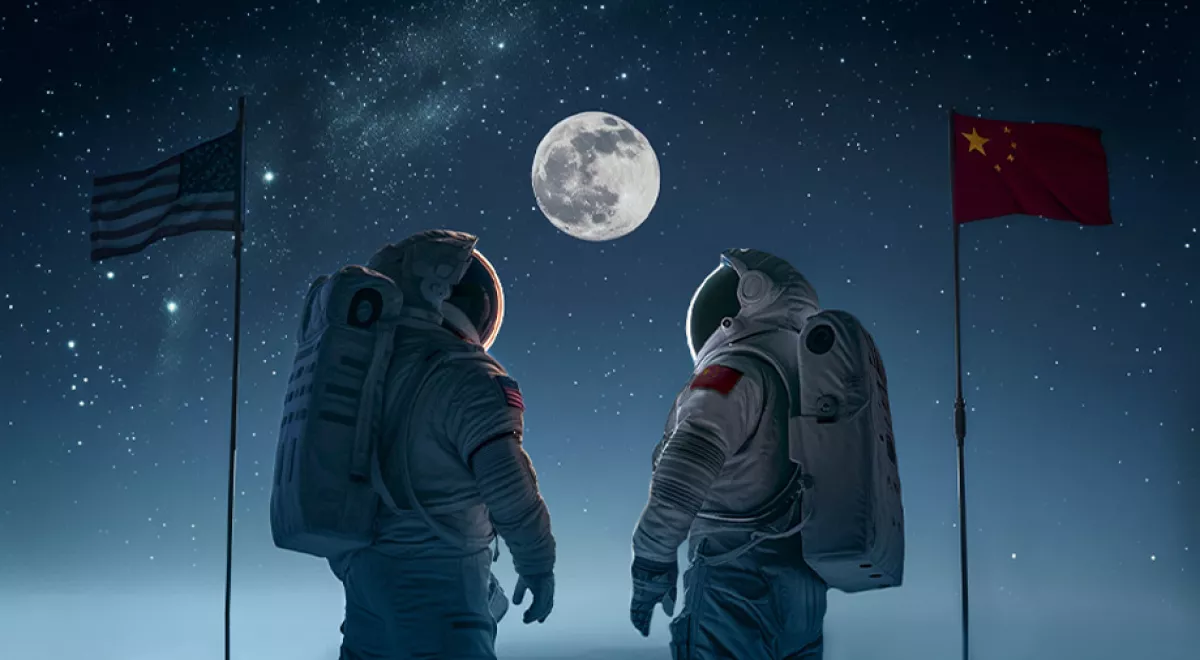US-China trade war: Smokescreen for battle for space dominance Cosmic rivalry
On January 20, 2025, the day of Donald Trump's inauguration, the world was introduced to a new iteration of the modernized Chinese chatbot DeepSeek-R1, accompanied by a statement claiming its superiority over the American development ChatGPT by OpenAI. Two days later, on January 22, Trump repealed a 2023 executive order regarding the security of artificial intelligence (AI) development.
According to the 47th President of the United States, the document was hindering innovation in the AI field. The following day, Trump announced the launch of a large-scale project called Stargate aimed at developing AI infrastructure. The initiative, which brings together the efforts of powerful tech giants such as OpenAI, SoftBank, Oracle, and MGX, is set to invest up to $500 billion over four years. It was emphasized that, alongside ensuring the U.S.'s supremacy in AI, the project would create hundreds of thousands of jobs.
On January 24, information was widely circulated about the plans of the American company Lonestar Data Holdings to place the first data centre on the surface of the Moon, named Freedom. It was noted that the "concept of space-based data centres is gaining traction as the energy needs to maintain such operations on Earth grow sharply."
At the same time, news broke that ByteDance (the owner of TikTok) had released an updated version of its famous AI model, Doubao-1.5-pro, which outperformed OpenAI in the benchmark test AIME.
Against this backdrop, news agencies reported a drop in the stock prices of global tech companies associated with the AI industry. The reason cited was the widespread information that the creation of DeepSeek-R1 required significantly fewer financial resources than OpenAI.

In the final days of January, a report was released about the launch of a new version of the AI model Qwen 2.5 by the renowned Chinese company Alibaba, which allegedly surpasses products in this field from OpenAI, DeepSeek, and Meta.
Thus, today and in the present moment, leadership in global geopolitics, whether one agrees with it or not, is primarily determined by technological innovations that can influence the shaping of the international agenda. Therefore, we are currently witnessing the strengthening of the role of both social networks (attempts to influence global human consciousness) and technological advancements capable of automating various processes in a matter of seconds, including solving intellectual tasks, regardless of the user's age or social category.
At the same time, there is growing concern about the role of neural networks in gradually replacing humans across various industries, with even the most skilled professionals facing the threat of job displacement. However, analysts are largely focused on the surge in competition within the field of neural networks, which is set to provide leading manufacturing countries with a significant geopolitical advantage. Some experts argue that it may no longer be nation-states but rather the heads of technological giants who will drive the emergence of new global trends. Yet, the reality remains clear: it is still the states that lay the groundwork for advancing ideas in this realm. In other words, countries will continue to engage in fierce competition for global dominance in this new technological era.
However, there is nothing particularly new in this dynamic. During the peak of geopolitical competition between the USSR and the U.S. in the intense phase of the Cold War, it was the advancements in defence technologies by scientists from these two superpowers (or, we could say, their respective blocs—NATO and the Warsaw Pact) that became the primary indicators of a nation's strength within the opposing worlds. Today’s geopolitical rivalry has simply shifted to a new arena in the fight for global leadership. Even so, the military dimension still plays a crucial role in driving these processes. Whether through direct military confrontations or in scenarios outside of direct battlefield contact, technological superiority in the air, on the ground, and in space continues to ensure that one nation holds a leading position over another. This was evident in January 2025, when the two leading global powers, the U.S. and China, showcased their technological prowess.

Against this backdrop, a new dimension is taking shape in the fierce race between Beijing and Washington for the "right to own" the planet Mars. There is no doubt that Trump is well aware that to this day, the "father" of the American lunar program is considered to be the 35th U.S. president, John F. Kennedy, who, just a month and a half after the successful flight of the famous Soviet cosmonaut Yuri Gagarin, declared the goal of sending a human to the Moon in the coming years. As he stated in 1962, "We choose to go to the moon in this decade and do the other things, not because they are easy, but because they are hard, because that goal will serve to organize and measure the best of our energies and skills, because that challenge is one that we are willing to accept, one we are unwilling to postpone, and one which we intend to win."
Clearly, Trump aspires to be the first not only to end all wars on Earth but also beyond the planet, so to speak, including making successful strides in the exploration of Mars. This was highlighted in his inaugural speech, where he emphasized the goal of planting the American flag on the planet. Meanwhile, across the street, China is developing new-generation rockets for manned missions to explore the Moon and Mars, within their line of sight.
Thus, the threats of trade wars between continents and civilizations, now discussed in all the world's languages, which complement widespread fears of the emergence of nuclear warfare elements, are in reality a kind of smokescreen to obscure the intense race between Washington and Beijing for supremacy in space. This, in turn, defines the main geopolitical trend of the current stage in history.








